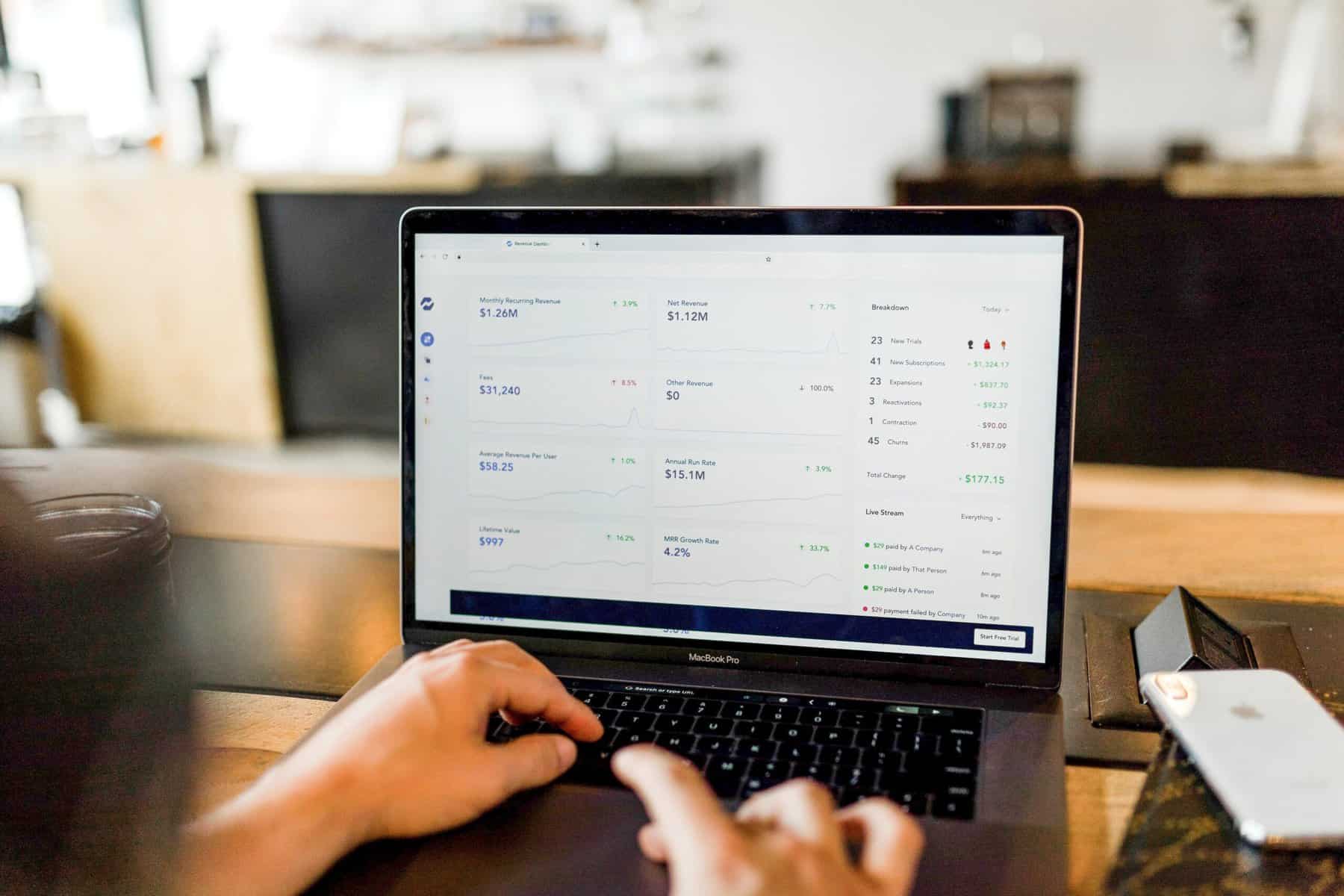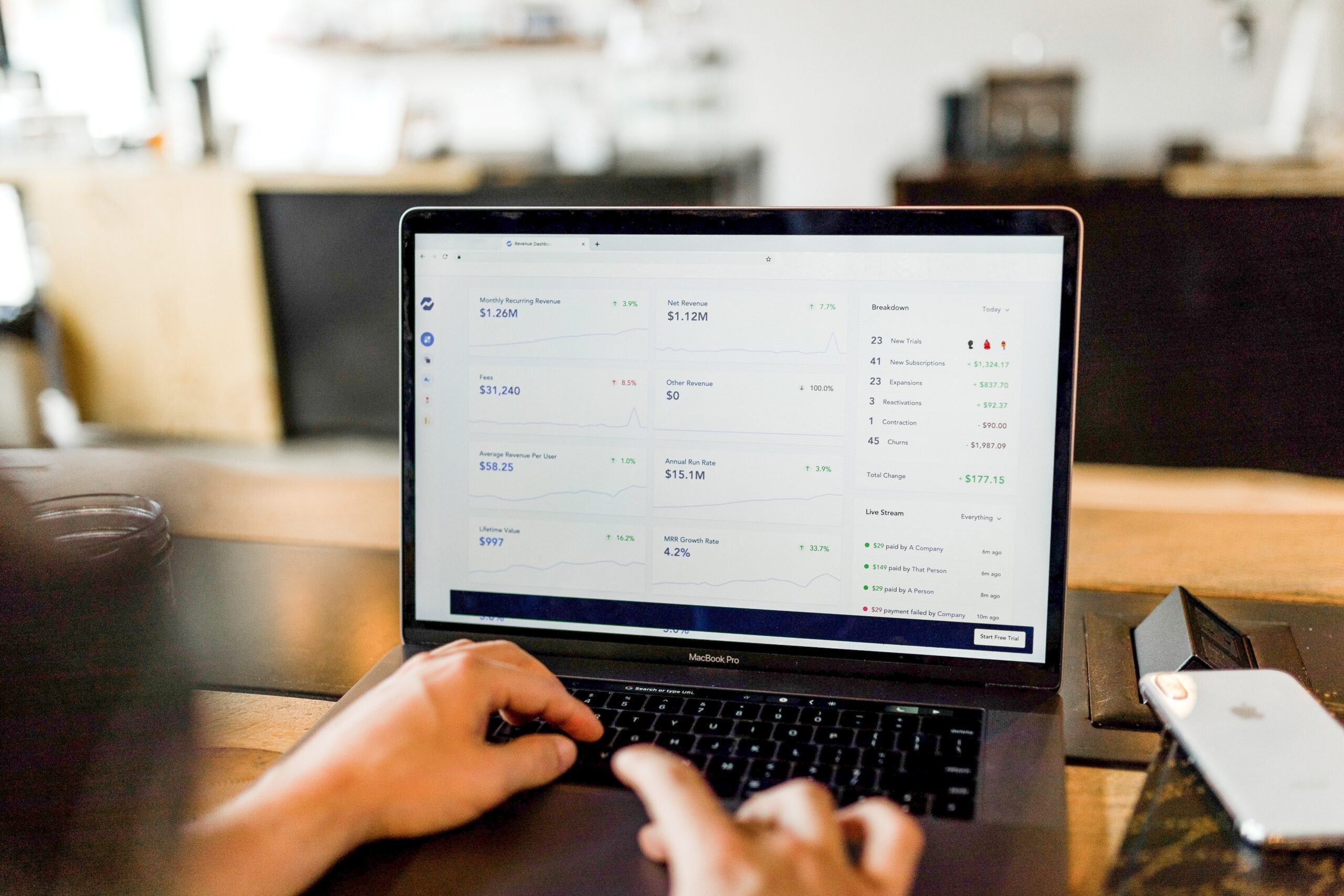In the ever-changing world of cryptocurrency, addressing the volatility of prices can seem like navigating a rollercoaster ride. But fear not, as this article aims to shed light on strategies and approaches to tackle this unpredictable market. Whether you are a seasoned investor or a curious beginner, understanding how to address the volatility of cryptocurrency prices can help you make informed decisions and navigate this exciting realm of digital currency. So, fasten your seatbelts and get ready to embark on a journey that will equip you with the necessary tools to surf the waves of cryptocurrency volatility with confidence.

Understanding Cryptocurrency Volatility
Cryptocurrency prices are notorious for their volatility, often experiencing significant price swings within short periods. Understanding the factors that influence these price fluctuations is crucial for anyone involved in the cryptocurrency market. By gaining a better understanding of the underlying causes of volatility, you can make more informed investment decisions and navigate the market with greater confidence.
Factors Influencing Cryptocurrency Prices
Several factors contribute to cryptocurrency price volatility. These include market demand and supply, news and events, regulations and government policies, as well as market manipulation and speculation. Each of these factors plays a significant role in shaping cryptocurrency price movements.
Role of Market Demand and Supply
Market demand and supply dynamics heavily influence cryptocurrency prices. Similar to traditional financial markets, when there is high demand for a particular cryptocurrency and a limited supply, prices tend to increase. Conversely, when demand decreases, or the supply increases, prices may fall.
Impact of News and Events
News and events have a substantial impact on cryptocurrency prices. Positive news, such as new partnerships, regulatory developments, or enhanced adoption, often lead to price surges. Conversely, negative news, such as security breaches, regulatory crackdowns, or market uncertainties, can cause significant price declines.
Effect of Regulations and Government Policies
Regulations and government policies can greatly impact cryptocurrency prices. Changes in legislation, introduction of new regulations, or government statements regarding cryptocurrencies can create market volatility. Investors should closely monitor regulatory developments to better anticipate potential price movements.
Market Manipulation and Speculation
Market manipulation and speculation can also contribute to cryptocurrency price volatility. Manipulative practices, such as pump-and-dump schemes, can lead to drastic price surges followed by sharp declines. Speculators, who enter the market with the sole purpose of profiting from short-term price movements, can also contribute to volatility.
Managing Cryptocurrency Price Volatility
While the volatility of cryptocurrency prices presents both risks and opportunities, there are strategies that can help manage and mitigate the impact of these price fluctuations. By adopting certain techniques, investors can navigate the market more effectively and potentially capitalize on price movements.
Diversifying Cryptocurrency Portfolio
Diversification is a widely recognized strategy in traditional investment markets, and it is equally applicable in the world of cryptocurrency. By holding a diversified portfolio of cryptocurrencies, you can spread your risk and reduce the impact of price volatility on your overall investment. Investing in a range of cryptocurrencies with different use cases and market capitalizations can help achieve a more balanced and resilient portfolio.
Setting Stop-Loss Orders
Stop-loss orders are essential tools for managing cryptocurrency price volatility. By setting a predetermined price at which you are willing to sell your cryptocurrency holdings, you can minimize potential losses. Stop-loss orders automatically execute trades when the price reaches a specified level, providing a proactive approach to risk management in a volatile market.
Utilizing Hedging Strategies
Hedging strategies involve opening positions that act as a counterbalance to existing investments. By taking positions in the opposite direction to your current holdings, you can potentially offset potential losses during price declines. Derivative products, such as futures or options contracts, can be utilized to implement hedging strategies effectively.
Using Dollar-Cost Averaging
Dollar-cost averaging is a technique that involves investing a fixed amount of money in cryptocurrency at regular intervals, regardless of its price. This approach helps mitigate the impact of price volatility on your investment. By consistently buying cryptocurrency regardless of its market price, you can benefit from the potential of accumulating more units during price declines and reduce the impact of market timing on your overall investment performance.
Considering Stablecoins
Stablecoins are cryptocurrencies that are pegged to a stable asset, typically a fiat currency like the US dollar. These cryptocurrencies aim to maintain a fixed value regardless of the market conditions, providing stability and predictability in a volatile market. Pivoting a portion of your cryptocurrency holdings to stablecoins during periods of high volatility can help buffer against potential losses.
Analyzing Technical Indicators
Technical analysis is a popular approach that involves analyzing historical price data, volume, and other market statistics to predict future price movements. By understanding and utilizing various technical indicators, you can identify potential trends and patterns in cryptocurrency price charts.
Moving Averages
Moving averages are commonly used technical indicators that smooth out price data over a specific period. Moving averages help identify potential support and resistance levels, as well as signal trend reversals. Shorter moving averages provide more timely signals, while longer moving averages are used to identify long-term trends.
Relative Strength Index (RSI)
The relative strength index (RSI) is a momentum oscillator that measures the speed and change of price movements. RSI values range from 0 to 100 and are used to identify overbought or oversold conditions. When the RSI exceeds 70, it is considered overbought, suggesting a potential price reversal. Conversely, an RSI below 30 indicates oversold conditions, signaling a potential buying opportunity.
Bollinger Bands
Bollinger Bands consist of a middle band, typically a simple moving average, and two outer bands that represent the standard deviation of price movements. Bollinger Bands help traders identify periods of high volatility and potential trend reversals. When price volatility increases, the bands expand, while periods of low volatility cause the bands to contract.
MACD (Moving Average Convergence Divergence)
The Moving Average Convergence Divergence (MACD) is a trend-following momentum indicator that helps traders identify potential buying or selling opportunities. The MACD consists of two lines – the MACD line and the signal line – as well as a histogram that represents the difference between the two lines. Positive histogram bars indicate bullish momentum, while negative bars suggest bearish momentum.
Fibonacci Retracement Levels
Fibonacci retracement levels are based on the mathematical sequence discovered by Leonardo Fibonacci. These levels are often used to identify potential support and resistance zones during price retracements. Commonly used retracement levels include 23.6%, 38.2%, 50%, 61.8%, and 78.6%. Traders utilize these levels to identify potential price reversal points.
Monitoring Fundamental Factors
In addition to technical analysis, understanding fundamental factors is crucial for making well-informed investment decisions in the cryptocurrency market. Monitoring market news, project fundamentals, development progress, partnerships, and tokenomics aids in gaining insights into the potential future performance of cryptocurrencies.
Tracking Market News and Updates
Following news and updates related to the cryptocurrency market is vital for understanding its dynamics. News about regulatory developments, industry partnerships, new project launches, security breaches, or significant market events can greatly influence cryptocurrency prices. Staying informed enables you to identify potential investment opportunities or make necessary adjustments to your trading strategy.
Evaluating Project Fundamentals
Assessing the fundamentals of a cryptocurrency project is crucial for determining its potential long-term value. Factors such as the project’s technology, team, use case, market adoption, and competitive landscape should be thoroughly evaluated. By conducting due diligence, you can identify projects with promising prospects and minimize the risk of investing in poorly executed or fraudulent ventures.
Assessing Development Progress
Monitoring the development progress of a cryptocurrency project is important for evaluating its potential future value. Regular updates on project milestones, technical advancements, and partnerships demonstrate commitment and progress. Transparent and consistent communication from the project team enhances investor confidence and increases the likelihood of success.
Considering Partnerships and Adoption
Partnerships and adoption play a significant role in the success and value proposition of a cryptocurrency. Collaborations with established companies or institutions, as well as increased adoption by merchants or financial services, can positively impact cryptocurrency prices. Evaluating the quality and significance of partnerships, as well as the level of adoption, provides valuable insights into the growth potential of a cryptocurrency.
Analyzing Tokenomics
Tokenomics refers to the economic model and supply dynamics of a cryptocurrency. Understanding factors such as the token’s total supply, inflation rate, distribution mechanism, staking rewards, or burning mechanisms is essential for evaluating its potential long-term value. Tokenomics can significantly influence the scarcity, utility, and demand for a cryptocurrency, ultimately affecting its price stability and growth prospects.

Following Trading Patterns and Strategies
Different trading patterns and strategies can be employed to take advantage of cryptocurrency price movements. Each strategy requires specific skills, risk tolerance, and time commitment. Understanding various trading approaches can help you align your trading style with your investment goals and risk appetite.
Trend Trading
Trend trading involves identifying and capitalizing on the prevalent direction of cryptocurrency prices. Traders aim to enter positions in the direction of the established trend and remain in the trade until the trend shows signs of reversal. By riding the upward or downward momentum, trend traders can potentially generate significant profits.
Swing Trading
Swing trading aims to capture short-to-medium-term price swings within an established trend. Swing traders analyze charts and technical indicators to identify potential entry and exit points for trades. The focus is on capitalizing on shorter-term price fluctuations rather than long-term trends.
Day Trading
Day trading involves executing multiple trades within a single day. Day traders take advantage of intraday price volatility and aim to profit from short-term price movements. Day trading requires a high level of focus, technical analysis skills, and a deep understanding of market dynamics.
Scalping
Scalping is a high-frequency trading strategy where traders aim to profit from small price differentials. Scalpers execute numerous trades within a short period, taking advantage of small price fluctuations. This strategy requires advanced knowledge, quick decision-making, and an efficient trading platform.
Arbitrage Trading
Arbitrage trading involves exploiting price differences between different cryptocurrency exchanges. Traders simultaneously buy a cryptocurrency on one exchange at a lower price and sell it on another exchange at a higher price, profiting from the price differentials. This strategy requires fast execution, access to multiple exchanges, and careful monitoring of market spreads.
Using Risk Management Techniques
Managing risk is essential for successful cryptocurrency trading and investment. Implementing risk management techniques helps protect your capital and minimize potential losses. By defining risk-reward ratios, setting realistic profit targets and stop-loss levels, allocating proper position sizes, avoiding emotional trading decisions, and utilizing trailing stops, you can effectively control and reduce your exposure to risk.
Defining Risk-Reward Ratio
Defining risk-reward ratios is a fundamental principle of risk management. It involves determining the potential reward of a trade compared to the potential loss. By establishing a favorable risk-reward ratio, you ensure that the potential profit outweighs the potential loss, providing a risk-reducing approach to trading.
Setting Realistic Profit Targets and Stop-Loss Levels
Setting realistic profit targets and stop-loss levels is crucial for managing risk. Profit targets define the level at which you aim to exit a winning trade, while stop-loss levels determine the price at which you are willing to exit a losing trade. By setting these levels in advance, you can limit potential losses and protect profits.
Allocating Proper Position Sizes
Properly allocating position sizes is essential for risk management. By determining the percentage of your capital to invest in each trade, you can prevent overexposure to a single investment. Position sizes should be determined based on the risk tolerance and account balance, aiming to preserve capital while maximizing potential returns.
Avoiding Emotional Trading Decisions
Emotional trading decisions are often driven by fear or greed and can lead to poor investment outcomes. It is essential to maintain a disciplined approach to trading and avoid making impulsive decisions based on short-term market fluctuations. A well-thought-out trading plan and adherence to predefined strategies can help mitigate emotional decision-making.
Using Trailing Stops
Trailing stops are dynamic stop-loss orders that automatically adjust to the market price. As the price moves in your favor, the trailing stop follows, protecting your profits. Trailing stops allow you to lock in gains during price increases while giving your investments room to grow. They are particularly useful in volatile markets where prices can fluctuate rapidly.

Taking a Long-Term Investment Approach
In addition to active trading strategies, adopting a long-term investment approach can be advantageous in the cryptocurrency market. This approach involves holding cryptocurrencies for an extended period, typically years, and capitalizing on their long-term growth potential. Taking a long-term view can help mitigate the impact of short-term price volatility and allow you to benefit from the overall growth of the cryptocurrency market.
Understanding Cryptocurrency Market Cycles
Cryptocurrency markets often go through cycles of bull and bear phases. Understanding these market cycles is crucial for long-term investors. During bull markets, prices tend to rise, while bear markets are characterized by extended price declines. By recognizing these cycles and adjusting investment strategies accordingly, long-term investors can optimize their returns.
Identifying Potential Growth Coins
Identifying potential growth coins involves conducting thorough research and analysis to identify cryptocurrencies with strong use cases, innovative technology, and solid fundamentals. By investing in projects with the potential for significant growth, long-term investors can benefit from substantial price appreciation.
Investing in Established Projects
Investing in established projects with a proven track record can be a more conservative approach to long-term investing. Established cryptocurrencies with widespread adoption and a robust ecosystem tend to be less volatile and have a higher likelihood of long-term success. Investing in these projects provides stability and reduces the risk associated with investing in new or unproven ventures.
Holding Through Volatility
A key aspect of long-term investing is maintaining conviction and holding assets through periods of volatility. Cryptocurrency prices can experience significant fluctuations, often prompting investors to panic sell during market downturns. However, holding through volatility allows investors to benefit from potential price recoveries and long-term market growth.
Rebalancing and Reviewing Portfolios
Periodic portfolio rebalancing and review are essential for long-term investors. Rebalancing involves adjusting the allocation of assets within a portfolio to maintain desired risk levels and investment objectives. Reviewing portfolios regularly allows investors to assess the performance of their investments, make necessary adjustments, and capitalize on changing market conditions.
Considering Advanced Trading Tools
Advanced trading tools provide sophisticated capabilities and automation that can enhance trading efficiency and effectiveness. These tools empower traders to execute complex strategies, access market insights, and make data-driven decisions. Considering the use of advanced trading tools can provide a competitive edge in the cryptocurrency market.
Algorithmic Trading
Algorithmic trading involves executing trades based on predefined rules and algorithms. By automating trading decisions, algorithmic trading reduces human error, increases trading speed, and enables simultaneous execution across multiple markets. Utilizing algorithmic trading strategies can help take advantage of market inefficiencies and exploit price discrepancies.
Social Trading Platforms
Social trading platforms enable traders to interact, share insights, and replicate the trades of successful traders. By following and copying the trades of experienced and profitable traders, individuals can leverage their knowledge and expertise. Social trading platforms create opportunities for learning and collaboration while potentially generating profitable returns.
Margin Trading
Margin trading allows traders to amplify their buying power by borrowing funds to open larger positions. This strategy can enhance potential profits but also exposes traders to higher risks. Margin trading requires careful risk management and thorough understanding of leverage before engaging in these high-risk activities.
Options and Futures Contracts
Options and futures contracts are derivatives that provide traders with the opportunity to speculate on the future price of a cryptocurrency without owning the underlying asset. These financial instruments allow traders to profit from both rising and falling markets and hedge against potential losses. However, options and futures trading requires a deep understanding of derivatives and careful consideration of risks.
Cryptocurrency Trading Bots
Cryptocurrency trading bots are automated software programs that execute trades on behalf of traders. These bots utilize various strategies, such as arbitrage, trend following, or market making, to take advantage of market opportunities. Trading bots can operate 24/7, react to market conditions instantly, and execute trades with precision. Using trading bots can save time, reduce emotional biases, and potentially improve trading results.

Educating Yourself and Seeking Professional Advice
In the fast-paced and ever-evolving world of cryptocurrency, education and seeking professional advice are vital for success. Keeping yourself informed about crypto markets, joining trading communities and forums, attending workshops and conferences, consulting with financial advisors, and utilizing mentorship programs can help you stay ahead and make informed decisions.
Staying Informed About Crypto Markets
Staying informed about cryptocurrency markets requires continuous learning and keeping up with industry news and developments. There are numerous online resources, newsletters, and market analysis platforms that provide valuable insights into market trends, regulatory updates, and project developments. By staying informed, you can make informed investment decisions and stay ahead of market shifts.
Joining Trading Communities and Forums
Joining trading communities and forums can offer opportunities for learning, networking, and sharing experiences with like-minded individuals. Engaging with experienced traders, participating in discussions, and exchanging ideas can improve your trading skills and provide valuable insights into market dynamics. Additionally, it provides a support network and access to diverse perspectives.
Attending Cryptocurrency Workshops and Conferences
Attending cryptocurrency workshops and conferences is an excellent way to gain in-depth knowledge, learn from industry experts, and network with professionals. These events often feature panel discussions, educational sessions, and keynote speeches by leading figures in the cryptocurrency industry. Workshops and conferences provide a platform for learning, building connections, and staying updated with the latest trends and developments.
Consulting Financial Advisors
Cryptocurrency investments can be complex and require a thorough understanding of the market. Consulting with financial advisors who specialize in cryptocurrencies can provide valuable guidance tailored to your specific financial goals and risk tolerance. Financial advisors can help analyze your investment portfolio, develop personalized strategies, and provide insights into managing cryptocurrency volatility.
Utilizing Mentorship Programs
Mentorship programs offer opportunities to learn from experienced traders and investors who can guide you through the intricacies of cryptocurrency trading. Having a mentor can provide invaluable insights, help develop trading skills, and offer guidance on risk management strategies. Mentorship programs allow for personalized education and learning from industry professionals.
Conclusion
Understanding and addressing the volatility of cryptocurrency prices is paramount for anyone involved in the cryptocurrency market. By identifying the factors influencing price fluctuations, employing risk management techniques, utilizing technical indicators, monitoring fundamental factors, following trading patterns and strategies, taking a long-term investment approach, considering advanced trading tools, and educating yourself, you can navigate the volatile cryptocurrency market with confidence.
While volatility presents risks, it also provides opportunities for significant financial gain. By combining a comprehensive knowledge of the cryptocurrency market with effective risk management and trading strategies, you can position yourself for success in this dynamic and rapidly evolving industry. Remember, staying informed, making informed decisions, and continuously adapting to market conditions are key to addressing the volatility of cryptocurrency prices.


